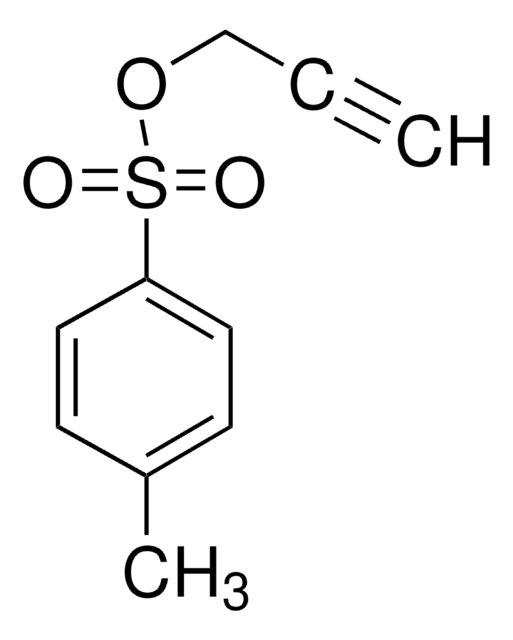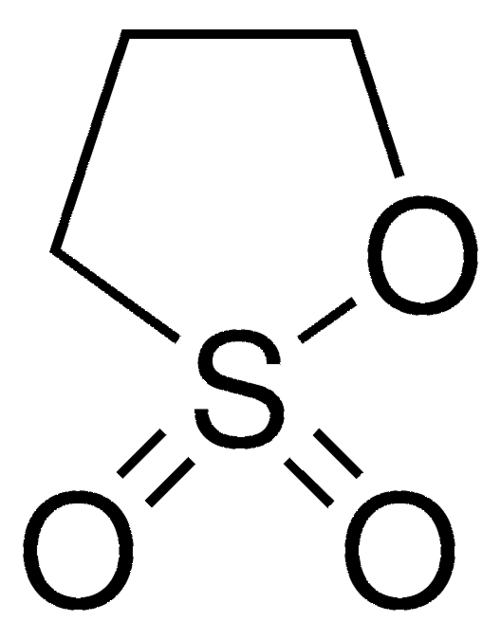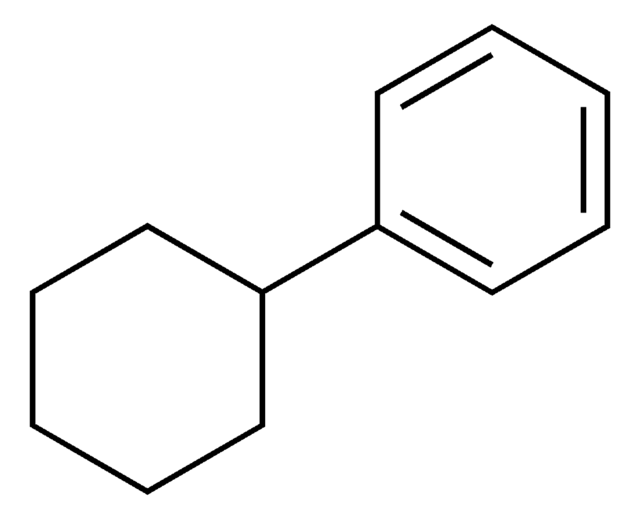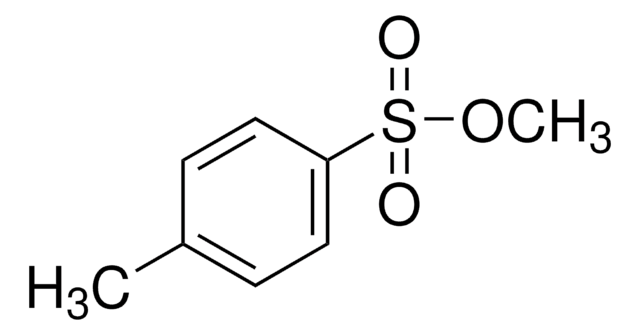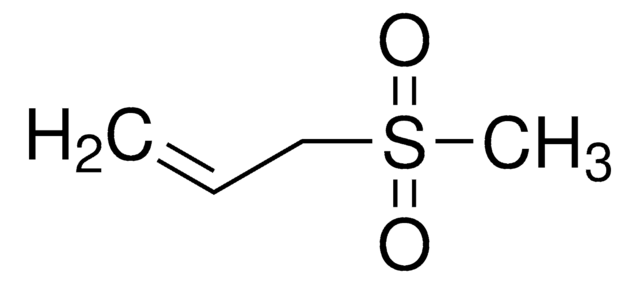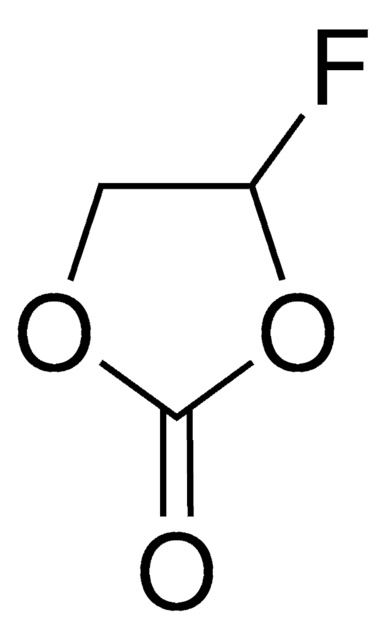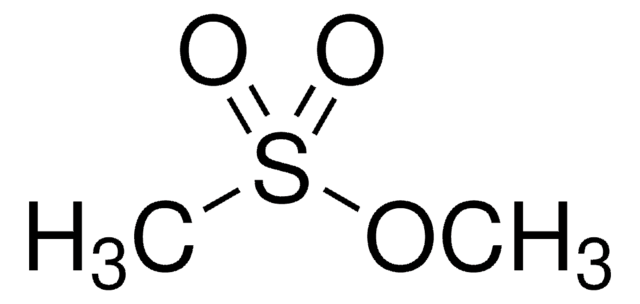809993
2-Propynyl methanesulfonate
battery grade, ≥99.5%, acid <200 ppm, H2O <100 ppm
Synonim(y):
2-Propinyl methanesulfonate, Methanesulfonic acid
About This Item
Polecane produkty
klasa czystości
battery grade
Poziom jakości
opis
Acid content: <200 ppm
Moisture: <100 ppm
Próba
≥99.5%
Postać
liquid
zanieczyszczenia
≤100 ppm H2O
≤200 ppm acid
tw
167 °C (lit.)
mp
17-19 °C (lit.)
gęstość
1.481 g/cm3
Zastosowanie
battery manufacturing
ciąg SMILES
CS(OCC#C)(=O)=O
InChI
1S/C4H6O3S/c1-3-4-7-8(2,5)6/h1H,4H2,2H3
Klucz InChI
OWAHJGWVERXJMI-UHFFFAOYSA-N
Zastosowanie
Uwaga dotycząca przygotowania
- These additives have low water content (less than 100 ppm), please handle under inert and moisture free environment (glove box).
- Keep containers tightly closed.
- Keep away from heat and ignition sources.
- Store in a cool and dry place.
- Avoid storing together with oxidizers.
Informacje prawne
produkt powiązany
Hasło ostrzegawcze
Danger
Zwroty wskazujące rodzaj zagrożenia
Zwroty wskazujące środki ostrożności
Klasyfikacja zagrożeń
Acute Tox. 3 Oral - Skin Irrit. 2
Kod klasy składowania
6.1C - Combustible acute toxic Cat.3 / toxic compounds or compounds which causing chronic effects
Klasa zagrożenia wodnego (WGK)
WGK 3
Temperatura zapłonu (°F)
>230.0 °F
Temperatura zapłonu (°C)
> 110 °C
Certyfikaty analizy (CoA)
Poszukaj Certyfikaty analizy (CoA), wpisując numer partii/serii produktów. Numery serii i partii można znaleźć na etykiecie produktu po słowach „seria” lub „partia”.
Masz już ten produkt?
Dokumenty związane z niedawno zakupionymi produktami zostały zamieszczone w Bibliotece dokumentów.
Klienci oglądali również te produkty
Produkty
Dr. Schmuch, Dr. Siozios, Professor Dr. Winter, and Dr. Placke review the challenges and opportunities of nickelrich layered oxide cathode materials. They discuss production processes for the layered oxide cathode materials as well as their chemistry and morphology.
Due to the adverse impact of the continued use of fossil fuels on the earth’s environment and climate, researchers have been asked to develop new approaches for producing power using renewable sources like wind and solar energy
Here, we present a short review of ionic liquid electrolytes used in state-of-the-art rechargeable batteries including high performance and low-cost aluminum batteries, non-flammable Li-based batteries, and high-cycling and stable dual-graphite batteries. We also outline the key issues explored so as to identify the future direction of IL development.
Nasz zespół naukowców ma doświadczenie we wszystkich obszarach badań, w tym w naukach przyrodniczych, materiałoznawstwie, syntezie chemicznej, chromatografii, analityce i wielu innych dziedzinach.
Skontaktuj się z zespołem ds. pomocy technicznej